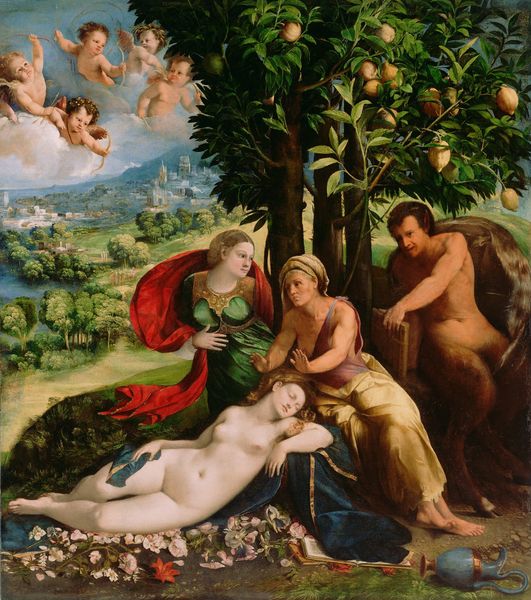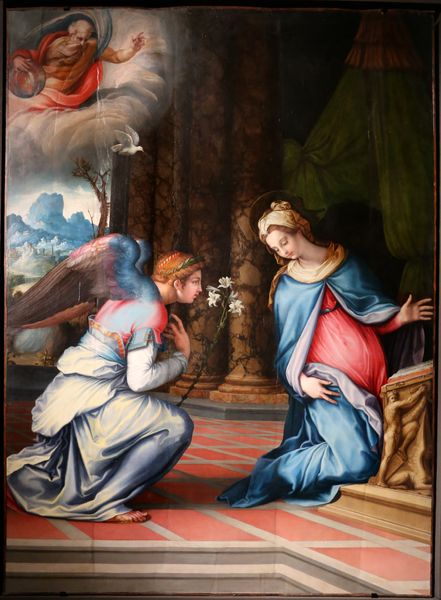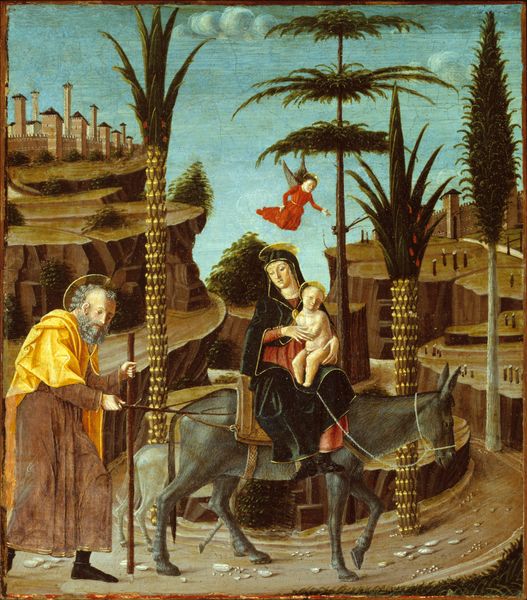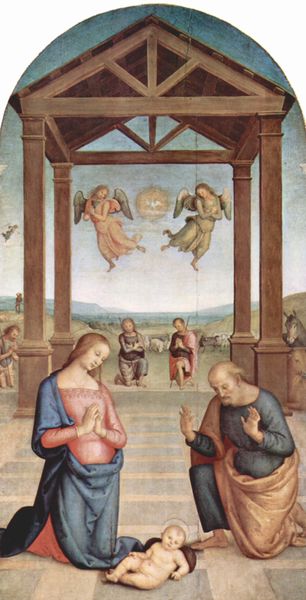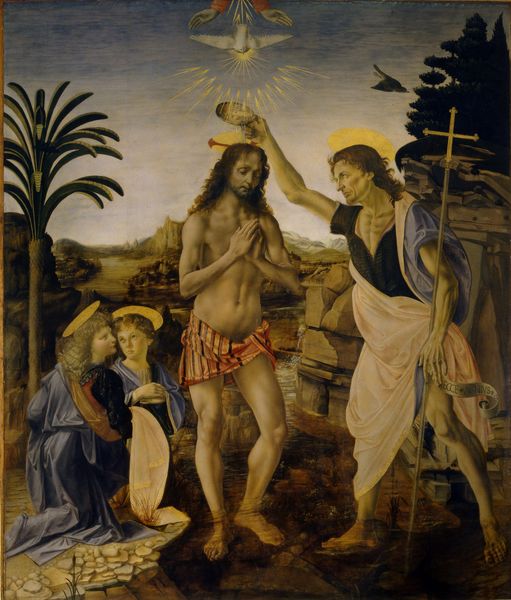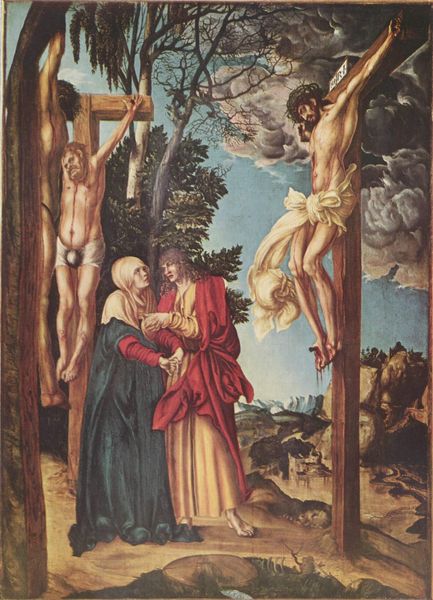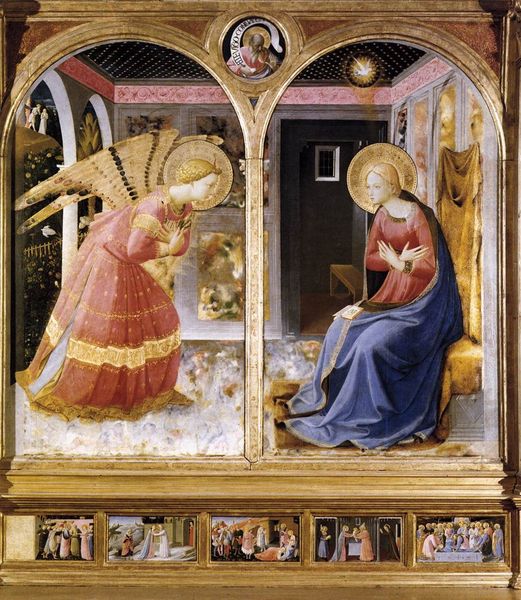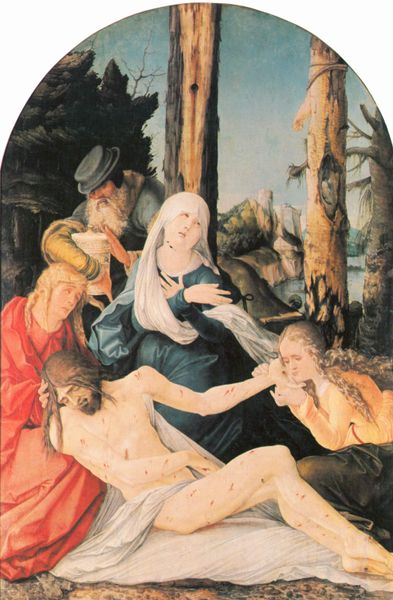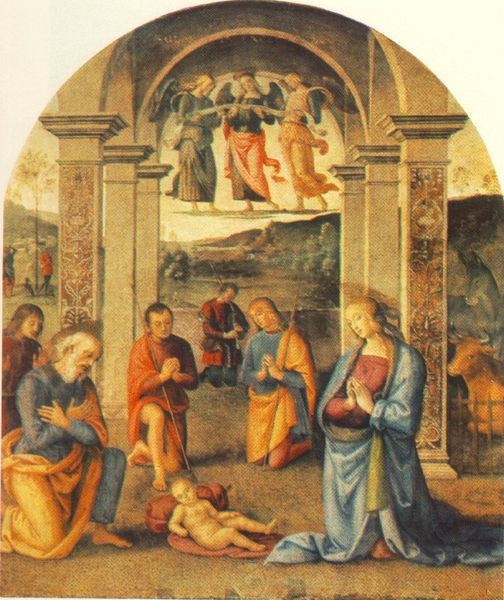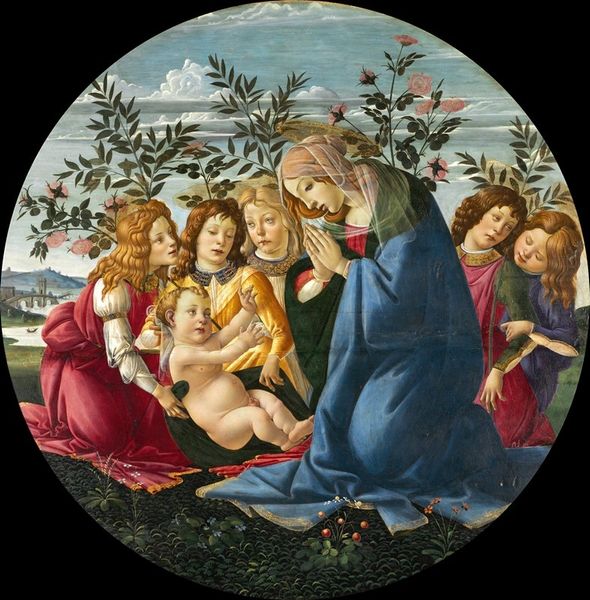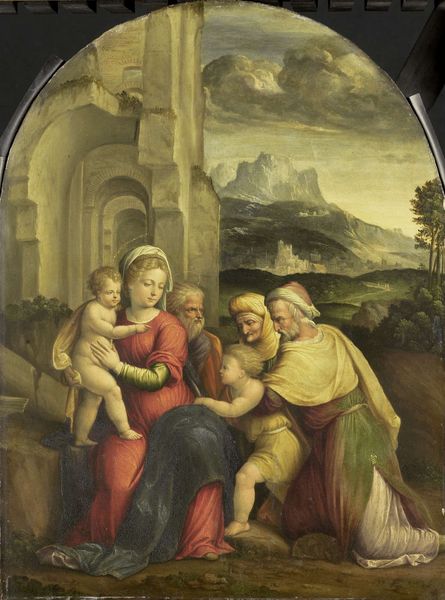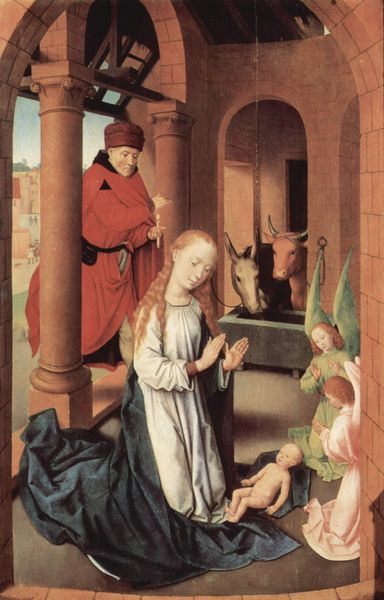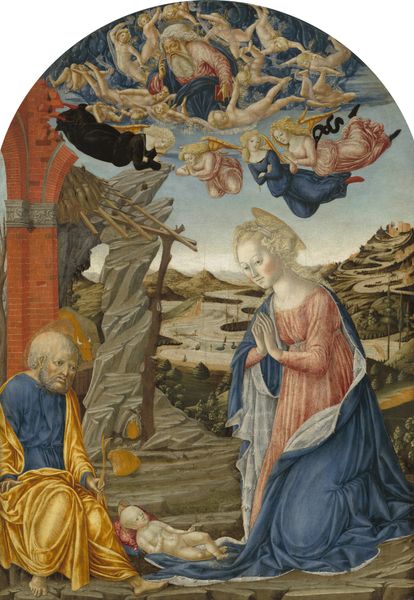
painting, oil-paint
#
portrait
#
painting
#
oil-paint
#
oil painting
#
christianity
#
painting painterly
#
history-painting
#
northern-renaissance
#
portrait art
Dimensions: 75.6 x 87.3 cm
Copyright: Public domain
Curator: Let’s delve into this captivating panel painting by Hans Baldung, created around 1515. It depicts St. John on Patmos, an intriguing work rendered in oil paint. Editor: Immediately striking is its division: earthy greens and browns anchor the lower right, while the apparition above vibrates with otherworldly luminescence. The composition seems to balance between the terrestrial and the divine. Curator: Indeed. Baldung, a student of Dürer, places St. John in his traditional pose, writing the Book of Revelation, but within a landscape infused with Northern Renaissance sensibilities. We can see the radical theology and socio-political implications of the reformation through the work. How does he reimagine inherited Christian images? Editor: I'm fascinated by the recurring visual language of the time—the Virgin Mary appears in an almond-shaped cloud with a halo, and a very earthly infant Christ, connecting Baldung to a broader symbolic vocabulary while offering a direct line to the divine. Look closely: what do you make of the raven with the tiny crown at John’s feet? Curator: That’s where it gets interesting, doesn’t it? The raven and the crowned toad upon the book are symbols of darkness and corruption. But, given Baldung’s reformist sympathies, we might read them as representative of the Papacy itself, thus aligning John with challenges to established religious authority. Editor: The toad is definitely repulsive. I can see that your view casts John as not simply recording scripture but as an active resistor, and this ties to ideas of reformation theology at the time! It is interesting how one painting combines these traditional symbols with contemporary commentary. Curator: Precisely! He's challenging the symbolic order of the Church through a sophisticated blend of image and critique. He positions St. John as a visionary dissident in a politically turbulent landscape. Editor: Considering Baldung's engagement with both established iconographies and emergent social currents, "St. John on Patmos" offers a potent visual allegory, ripe for layers of interpretive analysis. Curator: A powerful assertion. Reflecting on our discussion, I find this piece reaffirms the enduring role of art as a vehicle for social commentary. Editor: And for a dialogue with the ages, weaving established visual motifs with revolutionary undertones to prompt contemplation and shift perspectives.
Comments
No comments
Be the first to comment and join the conversation on the ultimate creative platform.
